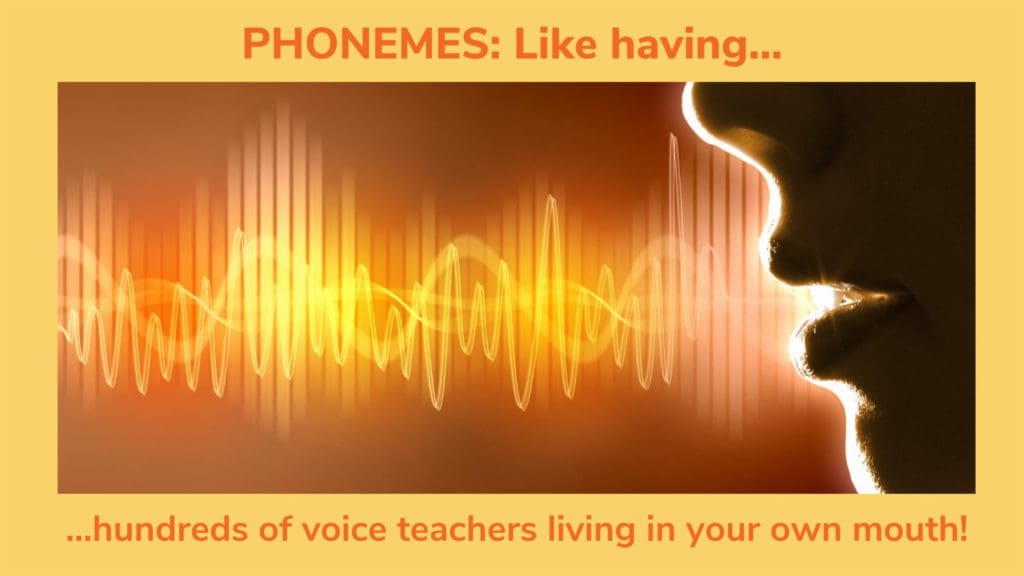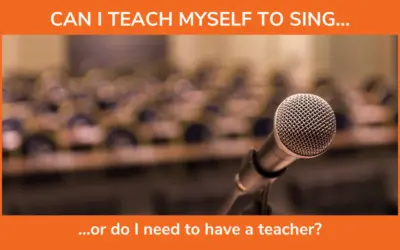Inside This Article
If you’ve worked with me, you know that I often say that the tongue is the center of the universe for each of us. And, in a very real way, I mean it.
Why?
The tongue is a complex organ with many many connections within our system: physically, emotionally, and personally. And, vocally speaking, being a very large, complex and flexible aspect of the anatomy, it also has a huge influence within the system itself in terms of action, organization, function and how our “technique” plays out re: some basic somatic principles: proportionality, ease, reversibility, etc.
– Robert Sussuma
Because of this, I’ve written several blogs on the topic of the tongue so far.
Below is a description of each of those (and one that is more indirectly related) and a bit of how they all fit in with my general theory of the tongue and vocal learning.
UNTANGLING THE TONGUE

Releasing the tongue is just the beginning of the process. And, I believe the process has four basic stages: Release, Mobilize, Coordinate, Integrate.
But, if it all starts with release, what are we releasing? Is it really the tongue?
No, not really. The “release” is a result of the process. It is an outcome that the physical structures release in sense-able and measurable ways, but what’s REALLY being released is the pattern of holding that our brain/nervous system is maintaining as a habit and/or ongoing feature of how our system is organized.
So, if it isn’t really the tongue that is releasing, but we also want that to happen as a result of some other kind of release deeper in the system, how do we do that?
Action + Awareness + Variation + More Awareness = Improvement in Action (aka Somatic Learning)
It is through a learning process that brings awareness to action in various ways that we actually give our nervous system the information it needs to:
- Update its image of the body
- Update its image of movement in action
- Update its organization of the structures at rest and in action
Cardinal movements
One of the ways to do this is to explore all of the movements of a structure (up, down, left, right, bend, unbent, etc.), the cardinal movements and beyond with awareness… looking to neutralize and equalize all of the directions so that they all become equally available without parasitic holding (unconsciously enacting one direction during another) or prior reorganization (have to let go of one before being able to enact another). This is all mobilization and coordination. Then learning to connect and integrate ALL of those options in and with various functions such as: walking, sitting, reaching, chewing, swallowing and speaking/singing!
It’s complex, but it’s cool!
And, in the process… guess what?!?! The tongue untangles, becomes more functional and we get better and better at doing the things we intend to do (vocally or otherwise!)
Read the full article: Untangling the Tongue – The Tongue at Rest and Resting in Action
RULING THE EXCEPTIONAL TONGUE

So, as you can see, it’s all very complex when it comes to movement and action within function (aka doing something with intention and for survival). But, finding rest is equally complicated.
Where does the tongue rest when NOT in action? How can we hold the tongue/lips/jaw when we are NOT doing something with them so that they are most functionally “at rest?”
This is an interesting question.
This is a kind of action in itself, as you’ll see when I discuss it in the full blog article.
But the gist is this: there’s a way to have the tongue up, against the roof of the mouth with the lips closed and teeth lightly touching as the default “neutral” for resting oral posture.
And although this was not clearly understood until recently (See these books for more info: JAWS: The Story of a Hidden Epidemic, by Kahn, Ehrlich, et al. and BREATH by Nestor) the evidence for this seems pretty clear.
I had a personal revelation with this – right in my own mouth! – and have found ways to bring this into singing learning that have brought so much more clarity into oral and vocal function for healthy voicing, digestion and breathing.
This is a great example of how the tongue can have such a HUGE influence on the system overall!
PHONEMES

Think about what sounds you would be able to make if you didn’t have a tongue… there wouldn’t be too many left. The tongue plays a huge part in so many of the language sounds we make on an everyday basis.
This is why I think phonemes are a wonderful and supremely functional and truly developmental way to explore and refine the action of the tongue.
There are so many ways to clarify, play with and vary the phonemes we each already know. And there are even NEW phonemes that each of us has never made that we can figure out. And, somehow all of the phoneme-learning also has an effect on the tongue: how we hold it at rest, and how we use it in action.
And it is the variations and new (for each of us) phonemes that seem to have the greatest positive impact overall. They are none and require much more awareness. Something wakes up in our system when we do this on a regular basis. It’s so cool. I just love phonemes.
Read the full article: Phonemes: Like Having Hundreds of Voice Teachers Living in Your Own Mouth
SINGING IN SYSTEMS

You are a system of systems in a system of systems. Your voice is a system within that system of systems. Your tongue holds a special place in that system.
And, although this article is not directly about the tongue, the tongue is a great example of systems thinking in action. Throw in a bit of experiential and somatic learning with systems thinking and you’ve got a great way to explore, integrate and update your entire organism in action for any function.
But, around here, we like singing and speaking as organizing functions and what sits right at the heart of the vocal system… the TONGUE!
One of the principles of somatic systems learning is: improvement anywhere = improvement everywhere. So using the tongue as a base of improvement while connecting it functionally with the whole system through awareness can lead to BIG shifts – often deep and personal ones too.
One of the principles of somatic systems learning is: improvement anywhere = improvement everywhere.
Robert Sussuma
So, in TONGUE-CLUSION….
This work is all about integration with awareness in action. And the tongue is a wonderful place to start.
Why?
It’s big. It’s centrally located. It’s well-connected literally and otherwise throughout the system. It’s an important aspect of daily human function for communication as well as for survival (digestion and breathing). It’s connected to our feelings and expression (vagus nerve) and the list goes on and on… Learning to work with the tongue in integrated ways (not exercises or protocols) can lead to profound learning and development.
Another principle in somatic systems learning is: Any part can lead, all can follow. This is an elusive one, but it points to one of the goals in somatic systems learning… that the system is free enough of rigid patterns and limitations that any part of the system can initiate a movement and all can follow and then another and another and another… so that leader becomes follower, follower becomes leader and so on.
Another principle in somatic systems learning is: Any part can lead, all can follow.
When this is orchestrated by intention – the intention to do something for a purpose – like singing and/or communicating the field of play opens up and becomes delightful. When experienced, not only does singing become easy and expressive, it is also fun, exhilarating and a perpetual learning experience in itself (an ongoing virtuous cycle of improvement and development.)
And, like any good system and/or process of development… there are surprises along the way that keep expanding what we know, what we feel, what we think and how we can express ourselves.
This improves the whole system and somehow, even though we may have started with the tongue and singing, suddenly everything else is improving too… how we play sports, how we chop veggies, how we make love… it’s endless.
When released, mobilized, coordinated and integrated, the tongue is a great leader in the system. Become a tongue expert (a tongue-spert) like me! It’s so much fun!
When released, mobilized, coordinated and integrated, the tongue is a great leader in the system.
Robert Sussuma
But, for all this talk about the tongue, remember it’s not the tongue that leads, really. It’s our awareness and intention. That’s what we’re really improving and learning to let lead the way… let the tongue (or any other part) become a great expression of that awareness and intention as a leader in vocal action!
Read these Articles next to expand your knowledge about the tongue and how you can use it to improve your singing:
UNTANGLING THE TONGUE:
The tongue at rest and resting in action.
RULING THE EXCEPTIONAL TONGUE:
The tongue at rest and the tongue in vocal action.
PHONEMES:
Like having hundreds of voice teachers living in your own mouth.
SINGING IN SYSTEMS
Is your diaphragm supporting your voice or your voice supporting your diaphragm – or BOTH?





0 Comments